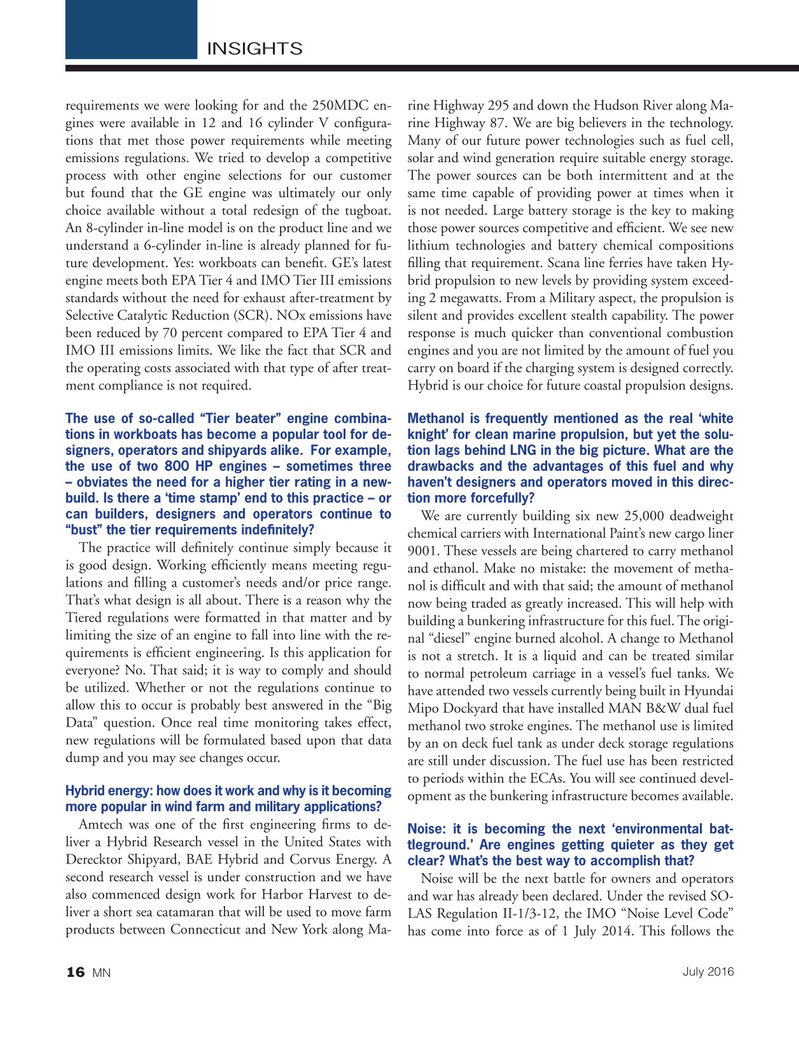
Page 16: of Marine News Magazine (July 2016)
Propulsion Technology
Read this page in Pdf, Flash or Html5 edition of July 2016 Marine News Magazine
INSIGHTS requirements we were looking for and the 250MDC en- rine Highway 295 and down the Hudson River along Ma- gines were available in 12 and 16 cylinder V con? gura- rine Highway 87. We are big believers in the technology. tions that met those power requirements while meeting Many of our future power technologies such as fuel cell, emissions regulations. We tried to develop a competitive solar and wind generation require suitable energy storage. process with other engine selections for our customer The power sources can be both intermittent and at the but found that the GE engine was ultimately our only same time capable of providing power at times when it choice available without a total redesign of the tugboat. is not needed. Large battery storage is the key to making
An 8-cylinder in-line model is on the product line and we those power sources competitive and ef? cient. We see new understand a 6-cylinder in-line is already planned for fu- lithium technologies and battery chemical compositions ture development. Yes: workboats can bene? t. GE’s latest ? lling that requirement. Scana line ferries have taken Hy- engine meets both EPA Tier 4 and IMO Tier III emissions brid propulsion to new levels by providing system exceed- standards without the need for exhaust after-treatment by ing 2 megawatts. From a Military aspect, the propulsion is
Selective Catalytic Reduction (SCR). NOx emissions have silent and provides excellent stealth capability. The power been reduced by 70 percent compared to EPA Tier 4 and response is much quicker than conventional combustion
IMO III emissions limits. We like the fact that SCR and engines and you are not limited by the amount of fuel you the operating costs associated with that type of after treat- carry on board if the charging system is designed correctly. ment compliance is not required. Hybrid is our choice for future coastal propulsion designs.
The use of so-called “Tier beater” engine combina- Methanol is frequently mentioned as the real ‘white tions in workboats has become a popular tool for de- knight’ for clean marine propulsion, but yet the solu- signers, operators and shipyards alike. For example, tion lags behind LNG in the big picture. What are the the use of two 800 HP engines – sometimes three drawbacks and the advantages of this fuel and why – obviates the need for a higher tier rating in a new- haven’t designers and operators moved in this direc- build. Is there a ‘time stamp’ end to this practice – or tion more forcefully?
can builders, designers and operators continue to
We are currently building six new 25,000 deadweight “bust” the tier requirements inde

 15
15

 17
17
